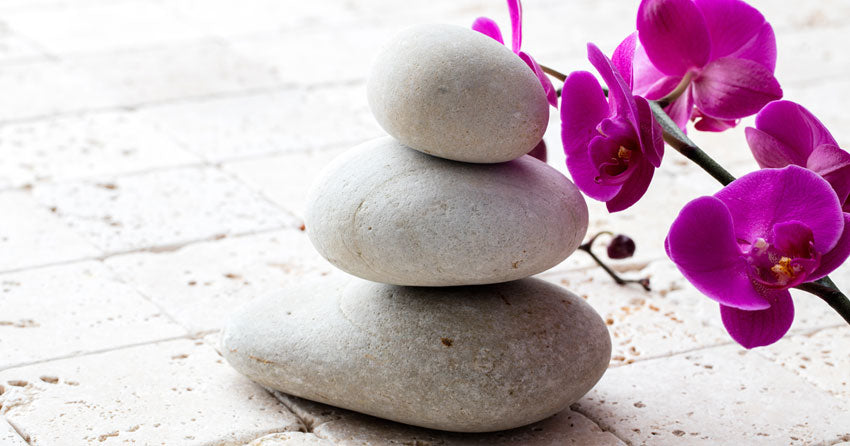How Do You Define Wellness?

The Merriam-Webster dictionary defines wellness as “the quality or state of being in good health especially as an actively sought goal.” But what is good health? Again, per Merriam-Webster, health is “1a. the condition of being sound in body, mind, or spirit; 1b. the general condition of the body; 2a. a condition in which someone or something is thriving or doing well; 2b. general condition or state.”
Words matter. But do these words really tell us what wellness is?
So back to wellness. The Global Wellness Institute (GWI) declares that wellness is the active pursuit of activities, choices and lifestyles that lead to a state of holistic health.” What is holistic health? My lay interpretation of holistic is that it covers my entire being – body, mind, spirit, environment, and professional and social life. Indeed, the Global Wellness Institute talks about six dimensions of health that when combined equal our entire being (as in being alive, not the body of being). Those dimensions are:
- Physical
- Mental
- Emotional
- Spiritual
- Social
- Environmental
Per Merriam-Webster’s definition of health, you could say that wellness means we are thriving or doing well in all these dimensions. Nirvana perhaps? Certainly, few of us experience days when all the stars are aligned, and everything (all 6 dimensions) in our lives is going brilliantly well. For some, four of the six will be rolling right along, while the other two are lagging behind. I believe that’s called kind of normal?
Normal is a setting on a washing machine.
Again, GWI suggests that health occurs on a continuum, and that the pursuit of activities, choices, and lifestyles to support wellness can move us from poor health (in any of the dimensions) to thriving, resulting in the optimal state of wellness. What are those activities, choices, and lifestyles? In our house, some of those are Walk or Die, strive for and maintain a healthy (for our individual bodies) weight, choose a vegan diet as part of promoting peace, enjoy meaningful time with our family, and participate in fulfilling professional and social activities.
Engaging in and enjoying wellness doesn’t mean that we are free of all disease or infirmity. Instead, wellness could mean that while you live with a chronic illness, you maintain close social connections, you find ways to exercise that fit within your limitations, you prioritize your sleep and nutrition, and you participate in some spiritual activity, whether that be praying, walking in nature, meditating, singing or whatever suits your interests.
Wellness is a personal journey. The National Wellness Institute asserts that “Wellness is positive and affirming.” Similar to GWI, the National Wellness Institute identifies six dimensions: emotional, occupational, physical, social, intellectual, and spiritual. They declare that:
Mindfully focusing on wellness in our lives builds resilience
and enables us to thrive amidst life’s challenges.
While the number and name of dimensions of wellness vary, they are all similar in their pursuit of balance. They are all connected, and one can build upon another one. One source includes cultural wellness in their dimensions, defined as the development of awareness, appreciation, acceptance and embracement of cultural differences. Dr. John Travis developed the Wellness Inventory in 1975, which includes “12 fundamental life processes that interact with one another to shape our life experience and our state of wellbeing.” His dimensions include:
- Self-responsibility and love
- Breathing
- Sensing
- Eating
- Moving
- Feeling
- Thinking
- Playing and working
- Communicating
- Intimacy
- Finding meaning
- Transcending
And a peer-reviewed study includes financial wellness as one of the dimensions. That study emphasizes that:
Attention must be given to all the dimensions, as neglect of any one over time will adversely affect the others, and ultimately one’s health, well-being, and quality of life. They do not, however, have to be equally balanced. We should aim, instead, to strive for a “personal harmony” that feels most authentic to us. We naturally have our own priorities, approaches, and aspirations, including our own views of what it means to live life fully.
Habits are a major factor in developing wellness. Habits are those things we do over and over. For example, I’ve bitten my nails since I first discovered I could do that! It’s an unhealthy, unattractive, and annoying habit. Interestingly, the etymology (that’s one of the words I learned reading the dictionary; it means origin) of the word “habit” is from the Latin word for “consist of” and later came to mean physical or mental constitution. Makes sense that habits are part of wellness, right?
So, what if you haven’t developed a habit of exercise or sleep hygiene or mindfulness? Can you still pursue wellness? Of course, you can! Unhealthy habits can be unlearned, and new habits developed. You might need a little assistance to get started and stay on your journey to new habits. Remember my nails? I invest in visiting a nail salon every few weeks; it’s especially difficult to bite that stuff they put on my natural nails.
There’s a large body of literature related to habits; perhaps, one of these books can help you in your journey to wellness:
- The Power of Habit: Why We Do What We Do in Life and Business
- Atomic Habits: An Easy & Proven Way to Build Good Habits & Bread Bad Ones
- Better Than Before: Mastering the Habits of Our Everyday Lives
- Tiny Habits: The Small Changes That Change Everything
- Good Habits, Bad Habits: The Science of Making Positive Changes That Stick
Remember, wellness is a personal journey. Wellness is positive and affirming.
Find what works for you.





